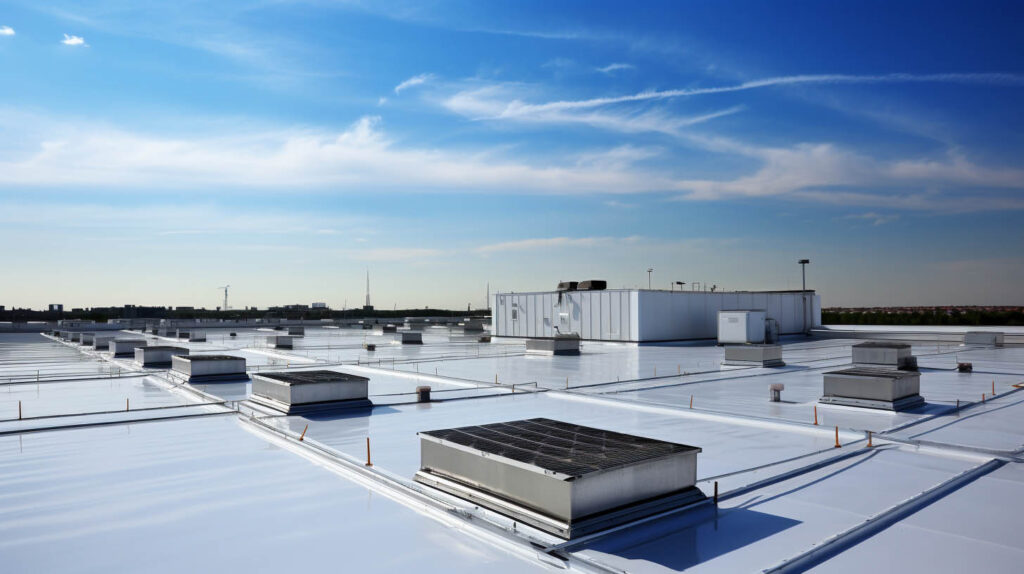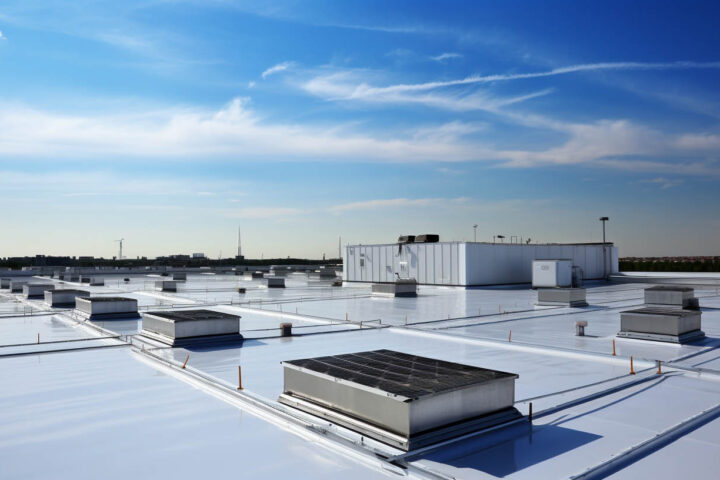
Navigating the Challenges of Flat Roof Installation
In the realm of commercial roofing, flat roofs stand as a popular choice due to their cost-effectiveness and functionality. However, the installation and maintenance of these structures require a meticulous approach to avoid common mistakes that can lead to significant expenses and safety hazards. As experienced roofing contractors, we bring to light the crucial aspects that ensure the longevity and reliability of flat roofs.
Understanding Proper Drainage: A Key to Longevity
One of the most critical factors in flat roofing is ensuring proper drainage. Unlike sloped roofs, flat roofs pose a unique challenge in water drainage, making them susceptible to pooling and leaks. It’s essential to design a drainage system that effectively channels water away from the roof surface. This involves installing adequate drains, scuppers, and gutters, and ensuring they remain clear of debris. Regular maintenance is vital to prevent water accumulation, which can lead to premature aging and damage to the roofing material.
Selecting the Right Materials: A Balance of Durability and Efficiency
The choice of roofing materials plays a pivotal role in the performance of a flat roof. It’s crucial to select materials that offer durability, weather resistance, and energy efficiency. High-quality membranes like TPO (Thermoplastic Polyolefin) and EPDM (Ethylene Propylene Diene Monomer) are popular choices for their longevity and adaptability to various weather conditions. Additionally, the incorporation of insulation layers can enhance energy efficiency, reducing heating and cooling costs for the building.
Precision in Installation: The Cornerstone of Roof Integrity
The installation process is where expertise and attention to detail become indispensable. Even the highest quality materials can fail if not installed correctly. Key steps include ensuring a clean, dry, and stable substrate, precise seam welding, and meticulous flashing around roof penetrations and edges. These practices are crucial in preventing leaks and extending the roof’s lifespan.
Regular Inspection and Maintenance: Proactive Measures Save Costs
Regular inspections and maintenance are the backbone of a healthy flat roof. This involves checking for signs of wear, such as cracks, blisters, or seam separations. Addressing these issues promptly can prevent more extensive and costly repairs down the line. A routine maintenance plan should include cleaning drains and gutters, removing debris, and inspecting the roof surface and flashings for potential problems.
Partnering with the Right Roofing Professionals
Choosing a reputable roofing company in Los Angeles is paramount. A skilled team, like Roof Repair Specialist, brings a wealth of experience and knowledge, ensuring that your flat roof is installed and maintained to the highest standards. With a focus on quality and customer satisfaction, the right professionals can provide peace of mind and a roof that stands the test of time.
Conclusion
In commercial flat roofing, success lies in the details. From selecting the right materials to ensuring precise installation and regular maintenance, each step is crucial in avoiding common mistakes. By partnering with seasoned roofing contractors, such as Roof Repair Specialist, businesses can ensure their investment is protected, and their roofing needs are met with the highest level of expertise and care.




